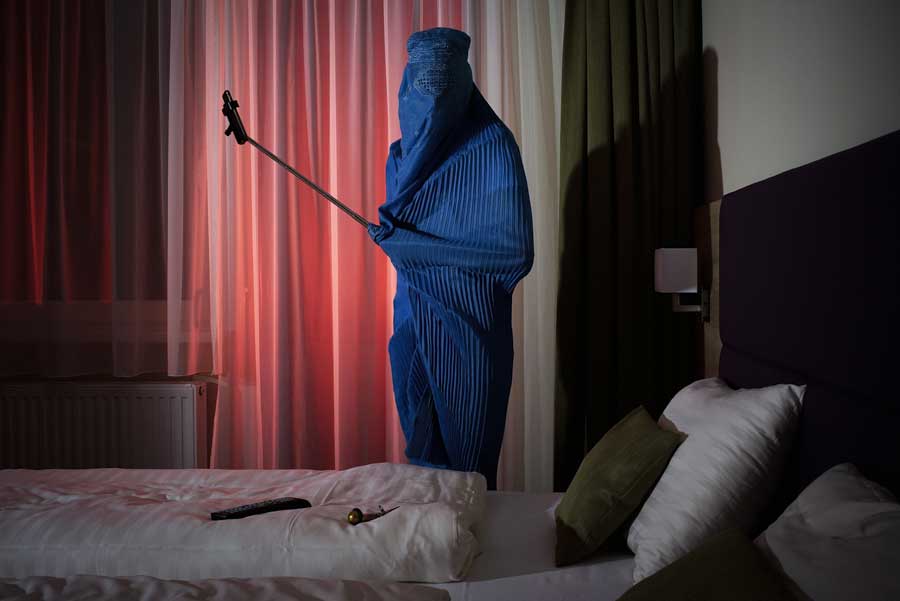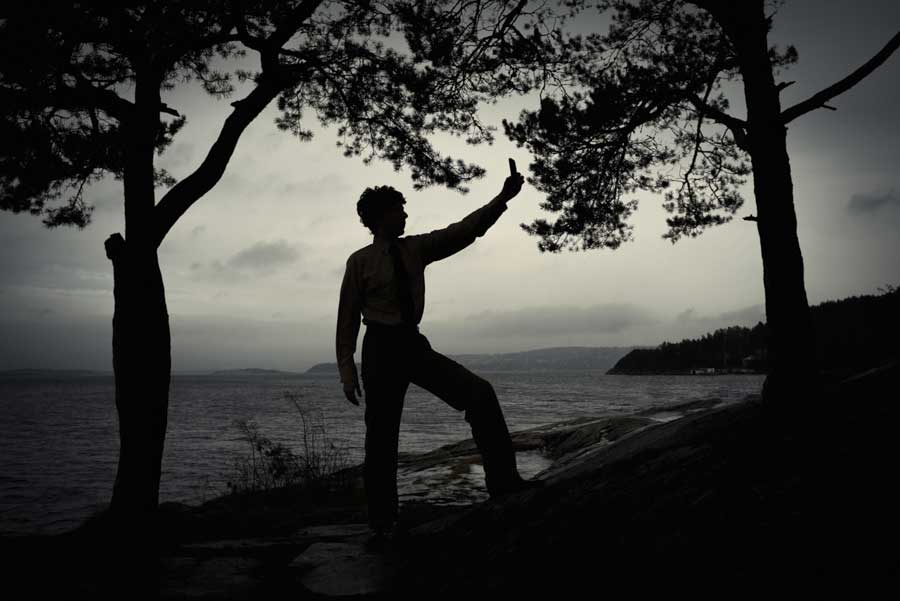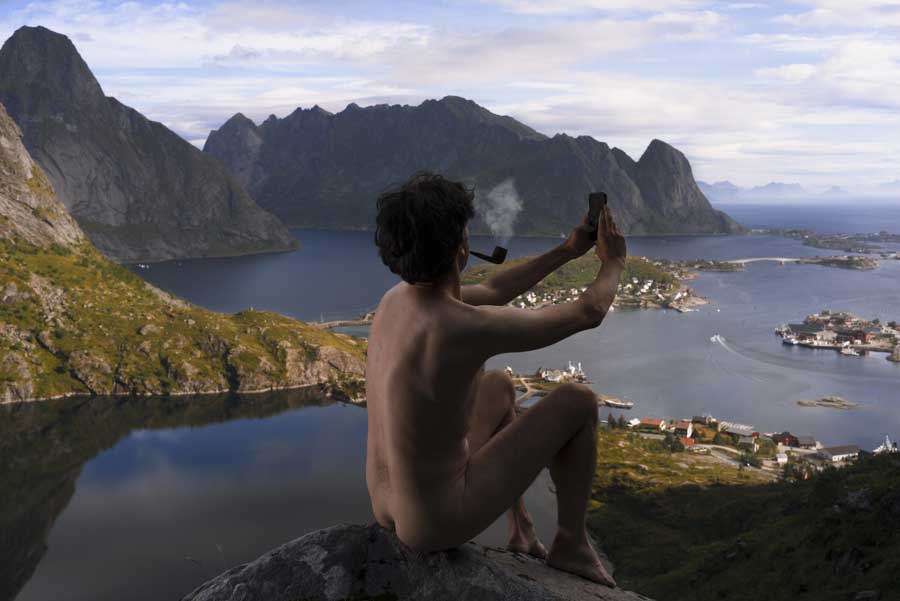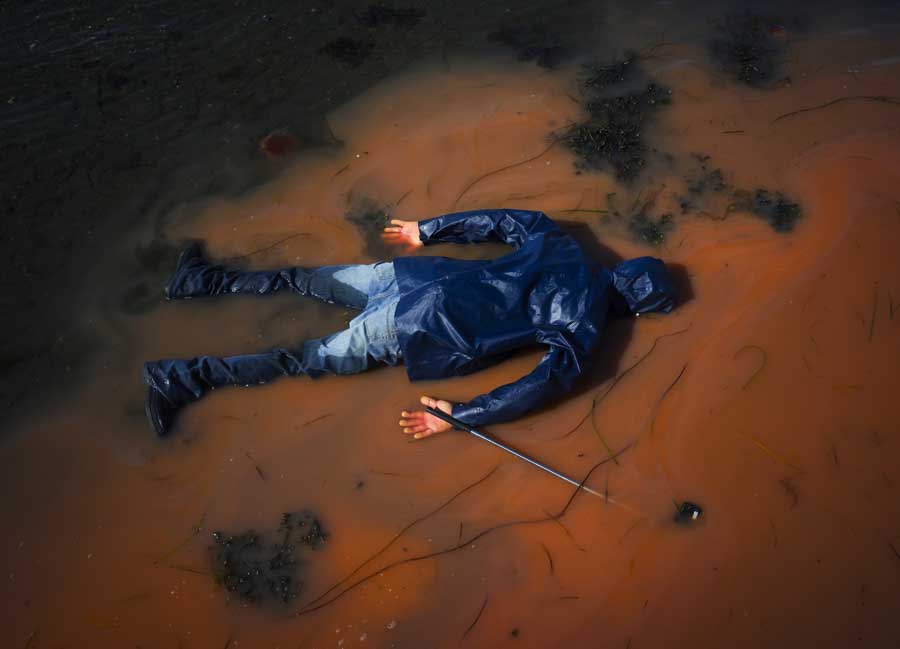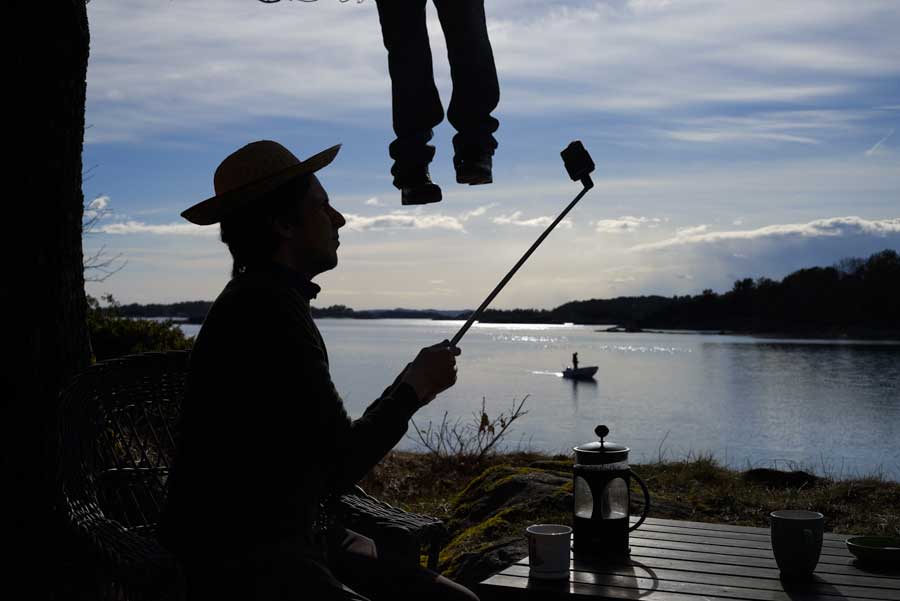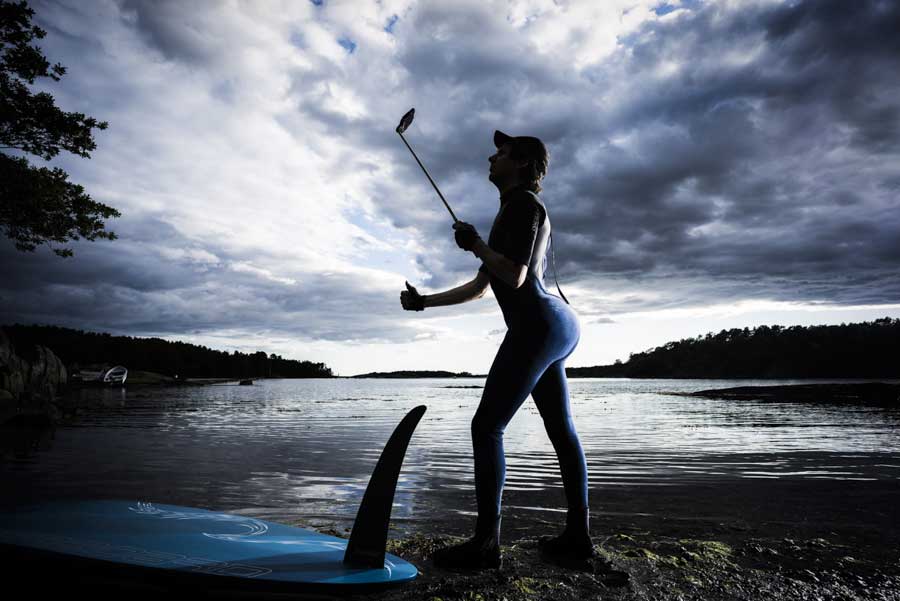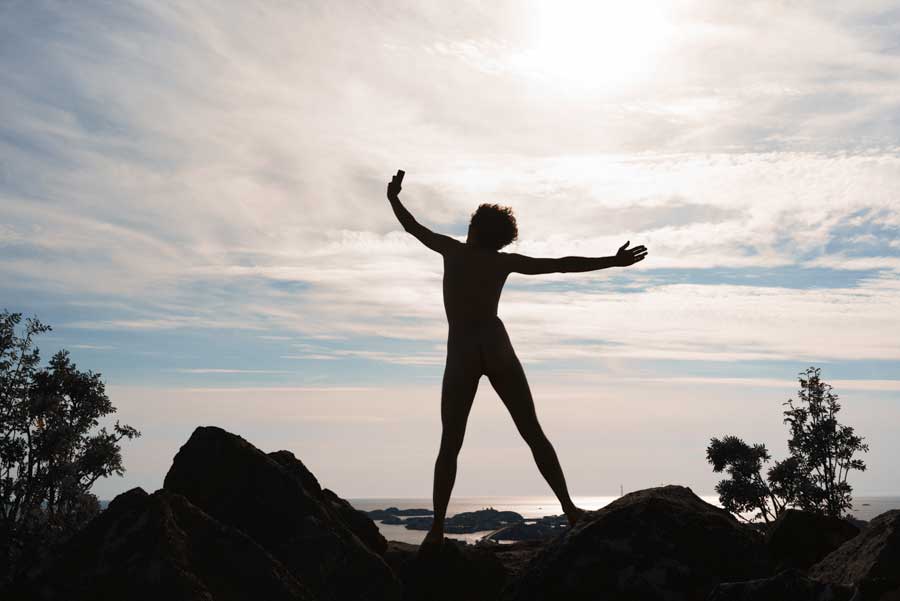The Selfie Project by Norwegian photographer Kristoffer Eliassen explores the relations between man and technology through staged photography.
Eliassen, originally educated from Bergen Academy of Art and Design (Norway), has throughout his whole career been interested in this particular topic. In this project, as in his previous work, Eliassen stands both in front of and behind the camera.
This particular project is concerned with the fact that people now are taking an enormous amount of selfies. The smartphones move some of our presence from the real world over to the virtual world, and The Selfie Project is about how these new tools have changed our behaviours and habits, especially when it comes to our sense of physical self in the public sphere.
The Selfie Project does, however, not show selfies, but the scenes of odd and private selfie acts, with a twist of humour. Taking a selfie is a performative act, where self- regulation and self-disclosure form part of the performance. On the one hand, it is about taking control and pretending to be someone, and on the other hand, let go, or lose control. The Selfie Project plays with this paradox, and also with photographical conventions from genres like snapshots, postcards, portraits and film stills.
The project is also concerned with how we act in public space. Eliassen is particularly interested in how the act of taking a selfie has created new and remarkable ways of bodily behaviour: When looking at ourselves on the display of the smartphone, we tend to forget how we in fact look in the eyes of others in that very moment. Inspired by this, Eliassen explores the body language of the selfie photographer, positioning himself on the outside of the situation, showing us both the beauty and the peculiarity of our self-indulgance. Interestingly, the images do not show the characters’ faces. Instead we see a silhouette, the selfie-photographer’s back, or the face is hidden behind a burka.
In “Hotel Room Selfie” the burka covered character is holding a selfie-stick in what appears to be a hotel room. The white translucent curtain is closed, and red light from the outside is shining through. In other words, it is a private act in a private space. However, the character is dressed for the public space, so the act is therefore at the same time not very private. The only presence of public space is the red light outside the room, which has connotations to “sinful” behaviour and nudity.
Another play with contradictory elements is visualized in “Selfie and Coffee”, where an idyllic outdoor scene is taking place. The character taking a selfie in front of a beautiful scenery by the sea is obviously not aware of the dramatic incident taking place in the upper frame of the selfie shoot, or: Is the hung body set up by the selfie shooter, who is posing in front of his victim? Eliassen’s images do not always give all the answers, and it is up to us to interpret what has happened, and what is going to happen next.
Characteristic for Eliassen ́s images is the duality they present us with: The images are fictional, but at the same time they pretend to be for real. In these particular photographs, this becomes evident when we become aware of how the images are aestheticized and professionally lit, at the same time as the characters are unaware of being photographed. They are only posing for them selves and their smartphones, and their focus is elsewhere, not directed towards us. The places represented in the photographs are both trivial (e.g. bathroom and hotel room) and typical (scenic landscapes), which creates connotations to both everyday life and more classical imagery, thus creating a paradoxical sphere of fiction and authenticity simultaneously.
The Selfie Project forms part of the exploratory ebook “Selvbilde” (Self image), connecting art and theoretical knowledge. It will also be a part of the exhibition “#Jeg” (#Me) at Norway’s National Museum of Photography, Preus Museum in Horten from October 2 this year to March 19, 2017. [Official Website]
Kristoffer Eliassen won 3rd prize in the category “Staged” at this year’s Sony World Photography Awards.




